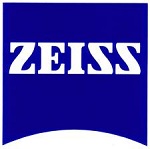Microscopy is being used by the Electrochemical Innovation Laboratory (EIL) at the University College London (UCL) to study the inner-workings of fuel cells and batteries. ZEISS Xradia 810 Ultra allows them to study the evolution of microstructure as small as 50 nm resolution, revealing the fine details of Li-ion batteries in 3D.
The research team at UCL is able to obtain multi-scale results, relating large features in the package to the complex pore pathways within the separators and electrode layers by combining the sub-micron resolution and high penetrating power of ZEISS Xradia 520 Versa.

3D renderings of the cathode structure of a lithium ion battery with particles (left) and pore network (right), showing the connected pore space (blue) as compared to the isolated porosity (yellow).
ZEISS Xradia 520 Versa
With ZEISS Xradia 810 Ultra we can accomplish non-destructive 3D imaging with spatial resolution comparable to the synchrotron sources, achieving important results in a range of disciplines including chemical engineering, materials sciences and earth sciences.
Francesco Iacoviello, Electrochemical Innovation Lab (EIL), Chemical Engineering, UCL
As X-rays penetrate most objects, there is no need to “slice” the specimens for X-ray microscopy before or during imaging. As a result, these investigations can be extended into the 4th dimension, to explore the evolution of 3D microstructure with time.

This information has been sourced, reviewed and adapted from materials provided by Carl Zeiss Microscopy GmbH.
For more information on this source, please visit Carl Zeiss Microscopy GmbH.